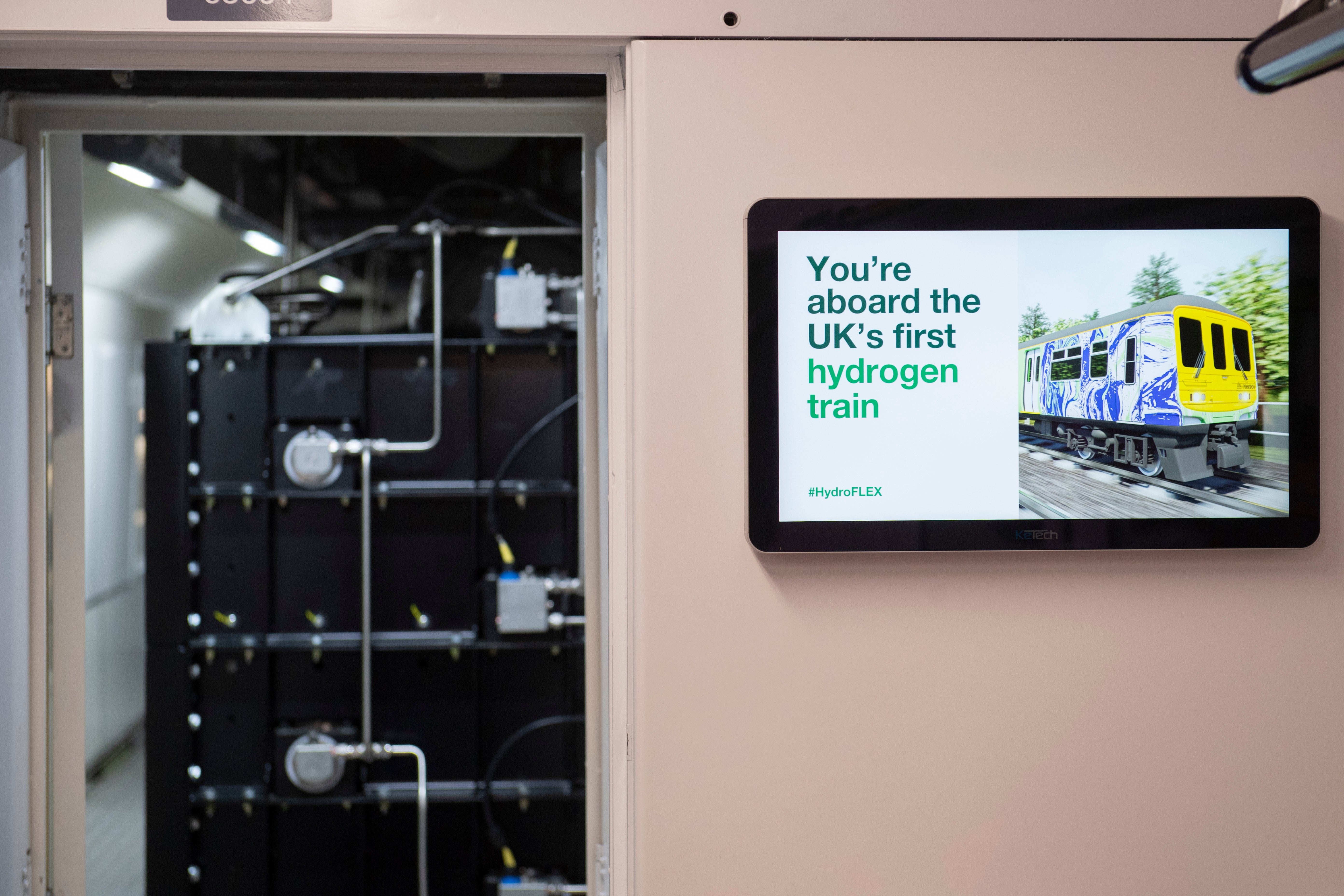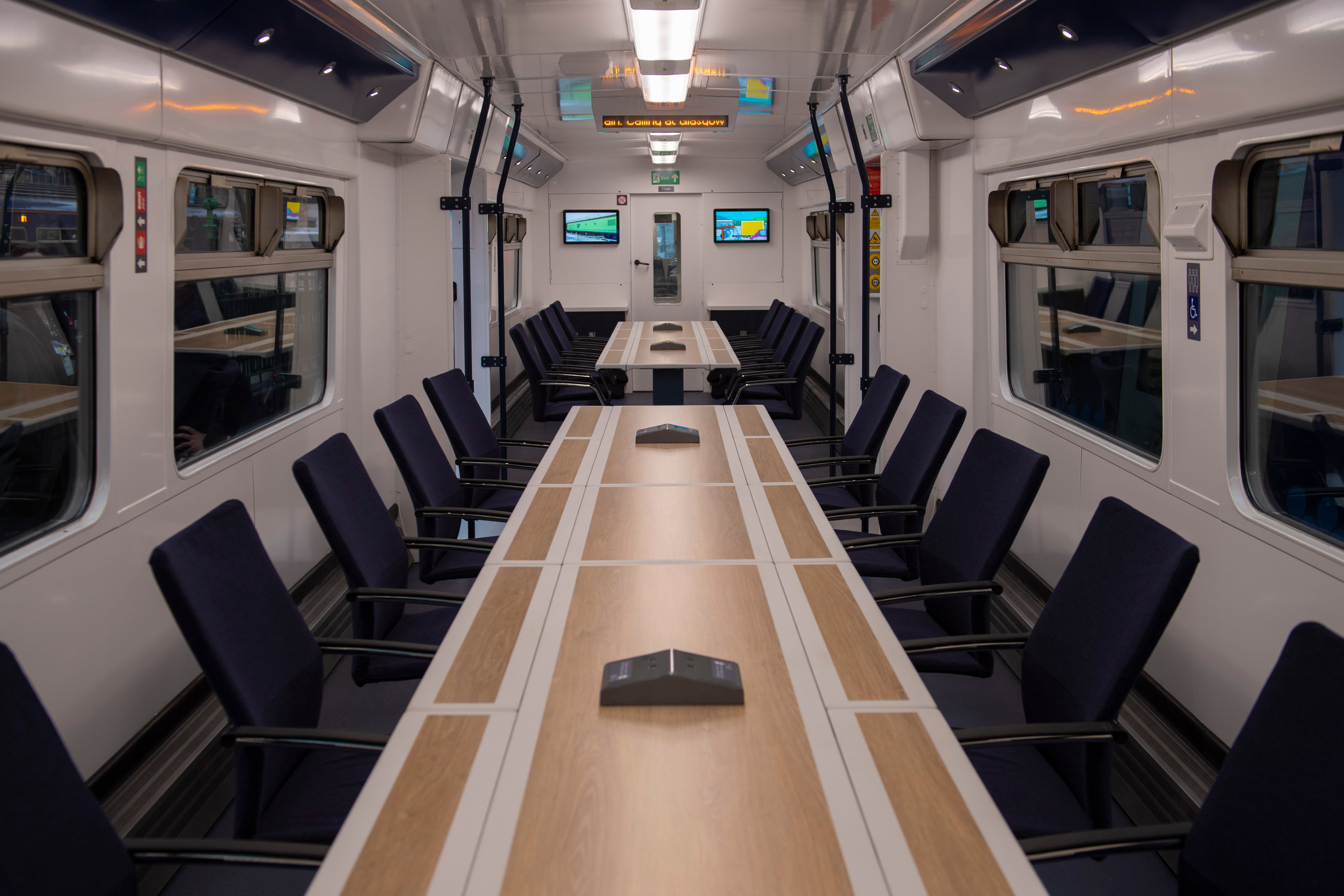All aboard HydroFLEX, the UK’s first hydrogen-powered passenger train
This emission-free train signifies a nationwide push towards greener rail travel

You wait years for a new generation of environmentally-friendly train to come along, and then three come along at once. Just in time for COP26 – and for Boris Johnson to eschew his private jet to jump aboard for a photo opportunity at Glasgow’s Central Station. Encouragingly, though, these rail pioneers demonstrate real substance over style, signifying a pan-UK push towards greener rail travel.
COP26 in Glasgow is the ideal forum for promoting sustainable rail, as the Scottish Government has committed to decarbonising its state-run railway network by 2035. Network Rail sees a green future too – Andrew Haines, chief executive, says: “Rail has a strong starting point as the greenest form of public transport. Decarbonising our railway, nurturing biodiversity on railway land and supporting our suppliers in cleaning up their act are fundamental to the future of the railway in Britain.”

If you were at COP26, you could have hopped onboard the £8m HydroFLEX, the UK’s first hydrogen-enabled passenger train. This 30-year-old train has been revamped by rolling stock provider Porterbrook and 30 other organisations, including the University of Birmingham.
The HydroFLEX runs using 277kg of hydrogen fuel, safely contained within 36 high pressure tanks. It’s not so much low emission as no emission – the only waste is pure water. The 300-mile range and speeds of up to 100mph make it viable, too, while flexibility is built in – the train can run using hydrogen, electric or battery power. Network Rail sees the technology being applied in Scotland, Teeside and East Anglia in future.

The sustainability doesn’t stop with the propulsion – digging deeper, this is one seriously green train. The efficient LED lighting system uses up to 60 per cent less energy, while the vinyl wrap livery is the UK’s first recyclable graphic liner, cutting 50 per cent on waste and 60 per cent on waste weight. Tables are made from recycled plastic bottles; even the seats are crafted from offcut material.
Mary Grant, CEO of Porterbrook, sees the HydroFLEX as not the complete solution, more part of pushing forward development: “We brought our HydroFLEX to COP26 to stimulate a serious discussion on railway decarbonisation. We believe that hydrogen is a credible energy source for non-electrified rail routes, and we invite transport authorities to join with us in seeing how best we can deploy this technology at pace.”

The other hydrogen contender is the Scottish Government-backed project by Arcola Energy, which runs on a hydrogen fuel cell power system. Their train – a Class 314 that was in service with Scotrail until 2019 – has just been moved to the railway heritage line at Bo’ness and by spring will offer access to the public, plus trips on this private line.
The odd one out of the trio making waves at COP26 – and indeed just before when it became the first electric train to cross the iconic Forth Bridge – is Vivarail. They offered trips during COP26 in Glasgow too, but their technology diverges towards fast charge battery power storage aboard their class 230 unit.
Questions – as with all pioneering technologies – remain, but Helen Simpson, Innovation and Projects Director at Porterbrook, stresses that at least the vagaries of the British weather won’t be an issue: “There are no different weather restrictions for HydroFLEX, so it can operate in the normal range of temperatures and weather conditions seen in the UK.” Whatever comes out of COP26 at a global level, this triumphant trio auger well for a brave new green era of UK rail travel.
Join our commenting forum
Join thought-provoking conversations, follow other Independent readers and see their replies
Comments
Bookmark popover
Removed from bookmarks